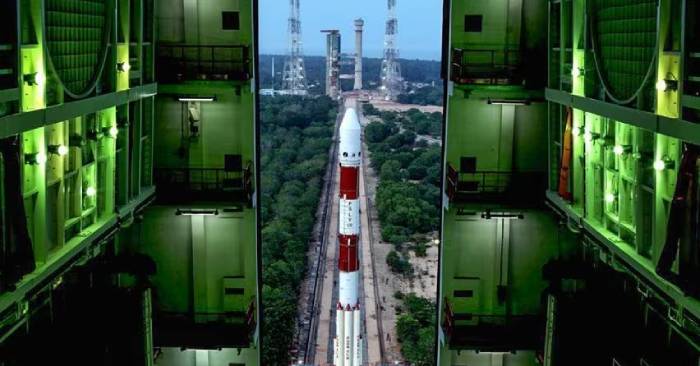India’s Aditya-L1 Solar Mission: Exploring the Sun’s Mysteries

The Aditya-L1 mission is scheduled for launch at 11:50 am today from Sriharikota, following India’s recent moon landing. This solar expedition, using ISRO’s PSLV, will embark on a 125-day journey to study the Sun.
The countdown for Aditya-L1’s launch began with 23.10 hours remaining on Friday, from ISRO’s announcement. The launch is set to take place at 11:50 am on Saturday from the second launch pad in Sriharikota. This mission follows India’s successful Chandrayaan-3 moon expedition last month.
ISRO Chairman S Somanath explained that the Sun mission will take 125 days to reach its designated position. Aditya-L1 is designed for remote observations of the solar corona and in-situ observations of the solar wind at L1, which is about 1.5 million kilometers from Earth.
ISRO noted that there are five Lagrangian points between the Sun and Earth, with L1 being ideal for continuous solar observation without eclipses, ensuring a consistent view of solar activities. The Sun, as the closest star, provides an excellent opportunity for detailed study compared to other stars.
Studying the Sun can also yield insights into stars in the Milky Way and other galaxies. Additionally, understanding solar activities is crucial for early warning systems, as explosive solar phenomena directed towards Earth can disrupt space environments and communication systems.
The Aditya-L1 mission utilizes the PSLV-XL variant to launch the spacecraft, equipped with seven payloads. Four of these will directly observe the Sun, while the remaining three will conduct in-situ studies of particles and fields at L1.
Initially, the spacecraft will be placed in a low Earth orbit and then transitioned to a more elliptical orbit. It will eventually be launched toward the Lagrange point L1 using its onboard propulsion systems. This journey is expected to take about four months.
Aditya-L1’s payloads aim to provide essential information for understanding coronal heating, Coronal Mass Ejections (CME), pre-flare, and flare activities, along with their characteristics, dynamics, and space weather.
The primary payload, the Visible Emission Line Coronagraph (VELC), will send approximately 1,440 images daily to the ground station. VELC is considered the most significant and technically challenging payload and has been integrated, tested, and calibrated at the Indian Institute of Astrophysics CREST.
The mission’s propulsion system involves the Liquid Apogee Motor (LAM), developed by the Liquid Propulsion System Centre (LPSC). LAM plays a crucial role in spacecraft propulsion and has been used in previous missions like Chandrayaan and the Mars Orbiter Mission (MOM).
The objectives of the Aditya-L1 mission include understanding the solar atmosphere, solar wind distribution, temperature anisotropy, and more. Monitoring the Sun around the clock is essential to study solar quakes, which can impact Earth’s geomagnetic fields. These solar quakes, known as Coronal Mass Ejections (CME), involve the ejection of vast amounts of solar material into interplanetary space, occasionally directed toward Earth.
This mission aims to enhance our understanding of the Sun’s behavior and its potential impact on our planet.






